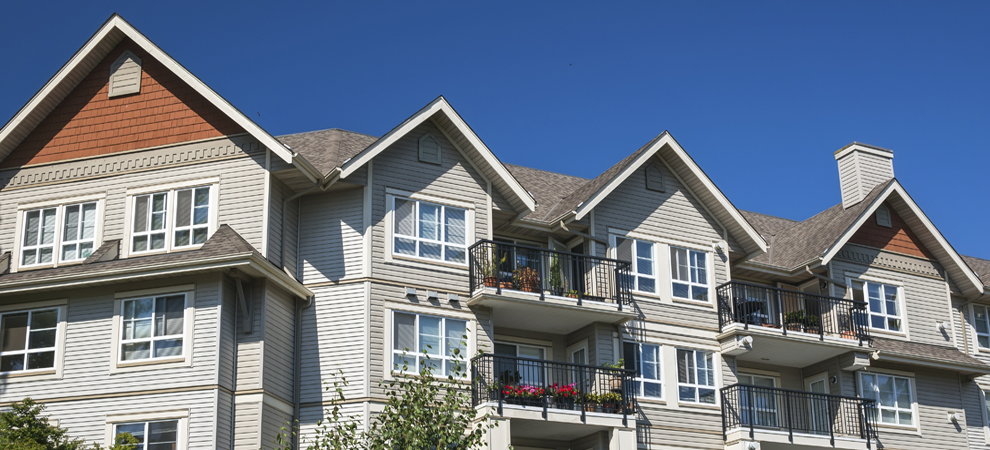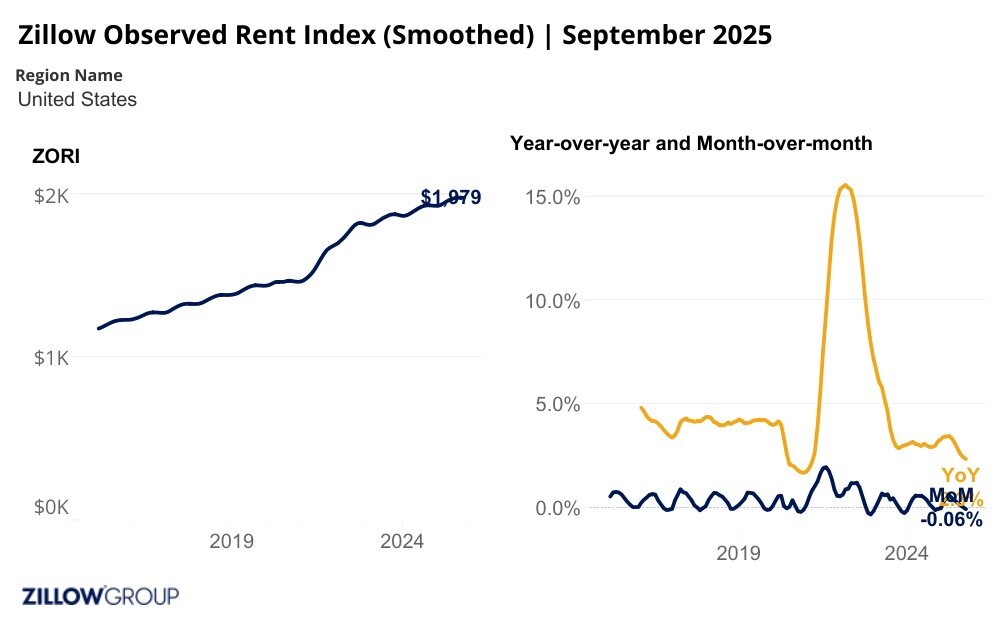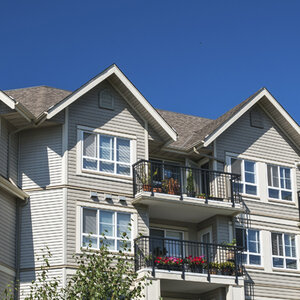Residential Real Estate News

U.S. Renters Get First Price Break in Four Years this Fall
Residential News » Seattle Edition | By WPJ Staff | October 20, 2025 8:04 AM ET
Apartment Construction Catches up with Renter Demand
In a significant shift for the rental market, Americans looking for apartments are seeing more breathing room -- a development reflective of growing supply and waning pricing pressure. New data from Zillow shows that renter-affordability has improved for the first time in four years, driven by slower rent growth and rising landlord concessions.
New construction catches up with demand
After a pandemic-era surge in demand, the apartment-building boom of 2024 has begun to show its effect. Builders completed more multifamily units last year than in any 50-year span, responding to housing shortages that emerged between 2020 and 2023. According to Zillow's senior economist Orphe Divounguy, the results are now becoming visible: "Markets that built more -- and faster -- are seeing that investment pay off with more renters able to comfortably afford an apartment."
The southern U.S. in particular -- where zoning is often less restrictive and construction timelines faster -- is emerging as a region where rental affordability is gaining traction.
Rent growth slips; concessions climb
Nationally, rent growth in multifamily units has decelerated sharply. Zillow reports annual increases of just 1.7 % in September 2025 for the multifamily sector, the second-lowest level of growth since 2021. A softer labor market, which weakens residential mobility and thus demand, is also contributing to the slowdown.
Meanwhile, landlords are increasingly turning to inducements: nearly 37.3 % of rental listings now offer some type of freebie -- such as a month of free rent or waived parking -- a new record and up considerably from the 14.4 % that offered concessions in 2019.
Affordability improves--but unevenly
The national picture of rental affordability is improving: the typical U.S. renter now spends about 28.4 % of median household income on rent, down from roughly 28.8 % a year ago -- and below the traditional 30 % "burden" threshold. Affordability improved in 38 of the 50 largest metro areas.
Yet, the gains are far from uniform. Apartment-rents are falling year-over-year in several Sun Belt and Mountain West markets including Austin (-4.7 %), Denver (-3.4 %), San Antonio (-2.3 %), Phoenix (-2.2 %) and Orlando (-0.8 %). On the flip side, markets still constrained by supply -- such as Chicago (+6 %), San Francisco (+5.6 %), and New York (+5.3 %) -- continue to see elevated rental growth.
Single-family rentals, which had out-performed apartments for several years, are now also showing signs of strain: growth in SFR rents has dropped to 3.2 %, the smallest annual increase on record since Zillow began tracking in 2016.
What happens next?
Industry analysts expect concessions will continue to rise, typically peaking during the winter months when competition among renters is lowest. With fewer renters on the hunt during the colder months, landlords may shift from offering perks to cutting base rents.
Meanwhile, the experience of markets that rapidly expanded supply serve as a reminder: when construction keeps pace with demand, housing-cost escalation can be contained. But in many regions, regulatory obstacles will make that path harder.
Bottom line
After years of steep rent increases and shrinking affordability, the rental market is showing signs of moderation. For now, renters are enjoying a slight breather -- though the degree of relief depends heavily on where they live.
Sign Up Free | The WPJ Weekly Newsletter
Relevant real estate news.
Actionable market intelligence.
Right to your inbox every week.
Real Estate Listings Showcase
Related News Stories
Residential Real Estate Headlines
- Greater Las Vegas Housing Market Sees Price Cooling in September as Inventory Climbs
- Global Super-Prime Home Sales Surge in Mid-2025
- Greater Fort Lauderdale Area Residential Sales Drop 12 Percent in August
- UBS Flags Miami, Tokyo, Zurich as World's Top Housing Bubble Risk Markets in 2025
- Government Shutdown Threatens to Snarl the U.S. Housing Market, Cloud Fed Policy
- Home Price Growth Stalls as U.S. Housing Market Shows First Signs of Cooling in 2025
- Pending Home Sales Rise in August as Lower Rates Spur U.S. Buyers
- U.S. Homebuyer Affordability Improves for Fourth Straight Month
- U.S. New-Home Sales Surge in August as Mortgage Rates Ease
- Despite Increased Foreign Buyer Activity, Miami Residential Sales Dip 11 Percent in August
- California Home Sales Enjoy Modest Uptick as Mortgage Rates Ease
- U.S. Home-Flipping Profits Sink to Lowest Level Since 2008 Financial Crisis as Costs Climb
- Why the World's Rich Are Flocking to Europe in 2025
- Federal Reserve Delivers First Rate Cut of 2025 as Mortgage Relief Proves Limited
- Homebuilder Sentiment Holds Steady in U.S. as Rate-Cut Bets Lift Outlook
- U.S. Mortgage Rates Experience Sharpest Weekly Drop in Over a Year
- U.S. Foreclosures Rise for Sixth Straight Month as Affordability Pressures Mount
- Black U.S. Homeownership Rate Falls to Two-Year Low as Job Losses Mount
- Las Vegas Home Prices Flatten as Listings Surge, Sales Slow
- Cooling Miami Housing Market Sees 16 Percent Annual Sales Drop in July
- U.S. Mortgage Delinquencies Uptick in June Amid Regional Pressures
- California, Florida Top U.S. Housing Markets Most at Risk of Downturn
- 30-Year Mortgage Drops to 6.56 Percent in Late August, Lowest Since October 2024
- Investors Maintain Elevated Role in U.S. Housing Market Despite Slight Pullback
- Pending Home Sales Show Mixed Signals as U.S. Buyers Remain Cautious
- Canadian Home Sales Extend Recovery in July
- U.S. Home Sales Rise in July as Buyers Gain More Bargaining Power
- Zombie Foreclosures Edge Up Across U.S.
- 2.6 Million Homes at Wildfire Risk Across 14 Western States in 2025
- One in Five Americans Willing to Trade Personal Safety for Home Affordability
- U.S. Home Price Growth Slows as Affordability Pressures Mount in 2025
- U.S. Mortgage Rates Dip to Four Month Low in Early August
- U.S. Mortgage Applications Rise in Late July, Breaking Four-Week Slump
- Hong Kong's Housing Market Stuck in Stalemate as Bulls and Bears Face Off
- U.S. Condo Market Struggles in 2025
- U.S. Pending Home Sales Remain Sluggish in June
- Los Angeles Area Wildfires Destroyed Nearly $52 Billion in Homes Last January
- Greater Palm Beach Area Residential Sales Slip in June Amid Growing Inventory
- Economic Resilience Lifts U.S. Housing Outlook Going Forward
- New Home Sales Stagnate as Affordability Struggles Continue in America








